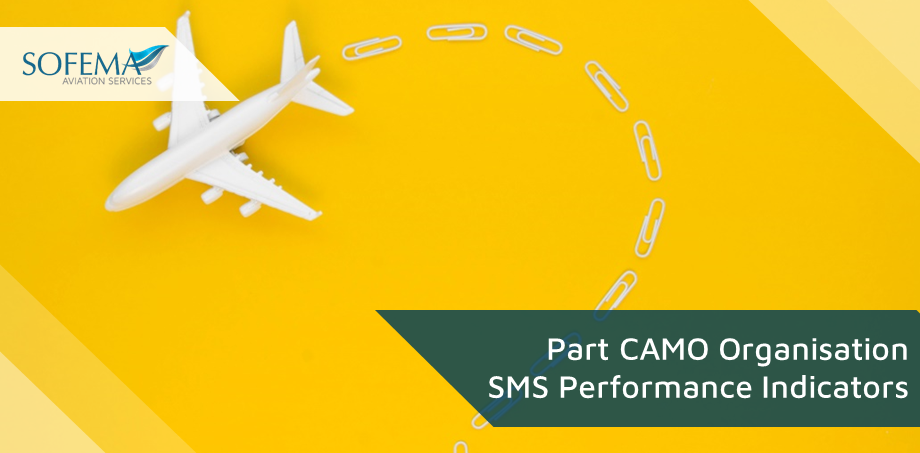Sofema Aviation Services looks at Safety Management System (SMS) Performance Indicators
Introduction
An essential aspect of any effective Safety Management System is to understand the methodology whereby we can measure the effectiveness of the delivery of the process.
The following list serves as an introduction to a range of indicators that may be employed within your organisation to support the development of Key Indicators and to facilitate the measurement of Safety Performance across the business.
Note – Using Data derived from the Compliance Quality Audit Program to support the Performance Metrics of the Part CAMO Safety Management System
Performance Measures can include some or all of the following:
1/ Internal audits/compliance monitoring: all non-compliances
a) Total number of findings per audit planning cycle & trend
b) % of findings which have a safety significance
2/ Internal audits/compliance monitoring: significant non-compliances
a) Number of significant findings versus the total number of findings
b) Number of repeat findings within 2 audit planning cycles
3/ Internal audits/compliance monitoring: responsiveness to corrective action requests
a) Average lead time for completing corrective actions per oversight planning cycle & trend
4/ External audits/compliance monitoring: all non-compliances
a) Total number of findings per audit planning cycle & trend
b) % of findings which have a safety significance
5/ External audits: significant non-compliances
a) Number of significant findings versus the total number of findings
b) External audits: responsiveness to corrective action requests
c) Average lead time for completing corrective actions per oversight planning cycle – trend Compliance
d) Consistency of results between internal and external audits/compliance monitoring
e) Number of significant findings only revealed through external audits
f) Using Data derived from the various oversite evaluations performed on the SMS system
6/ Strategic management
a) The degree to which safety is considered in the organization’s official plans and strategy documents – For example – to add as a final agenda item to all meetings
“Is there anything discussed during today’s meeting which has a bearing on Safety or impacts in some way our SMS – If yes please identify an action and a responsible person.”
b) The frequency with which the organization’s official plans and strategy documents are reviewed with regards to safety – A typical meeting periodicity of the
Safety Review Board would be – 3 months
Important is the validity of the agenda to include all relevant areas and for each identified action item to be allocated to a responsible person.
7/ Management commitment
a) The number of management walk-arounds related to oversight and implementation of the SMS process – Organisation Wide per month/quarter/year
Note there should be established criteria to provide a framework for the engagement with the SMS process.
b) Number of management meetings dedicated to safety per month/quarter/year
A typical meeting periodicity of the Safety Review Board would be – 3 months.
Important is the validity of the agenda to include all relevant areas and for each identified action item to be allocated to a responsible person.
The above list is an introduction only to a number of aviation business areas where we can establish SMS Performance Indicators.
To see the full contents please visit the Sofema Download Area
Follow this link to our Library to find & download related documents for Free.
What`s more :
a) Introducing a Cutting Edge, Effective & Affordable CAMO Software
b) For access to a world leading CAMO Diploma Program with 25 separate courses please see the following links
Next Steps
Sofema Aviation Services and Sofema Online – Provide Classroom, Webinar & Online Regulatory & Vocational Training.
For further details please email team@sassofia.com
Tags:
CAMO, Safety Management System SMS, SMS performance, SMS, Part CAMO, SAS blogs, Typical SMS Performance Indicators Within a Part CAMO Organisation





